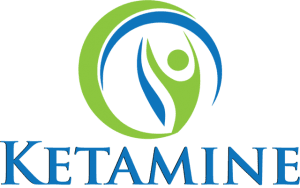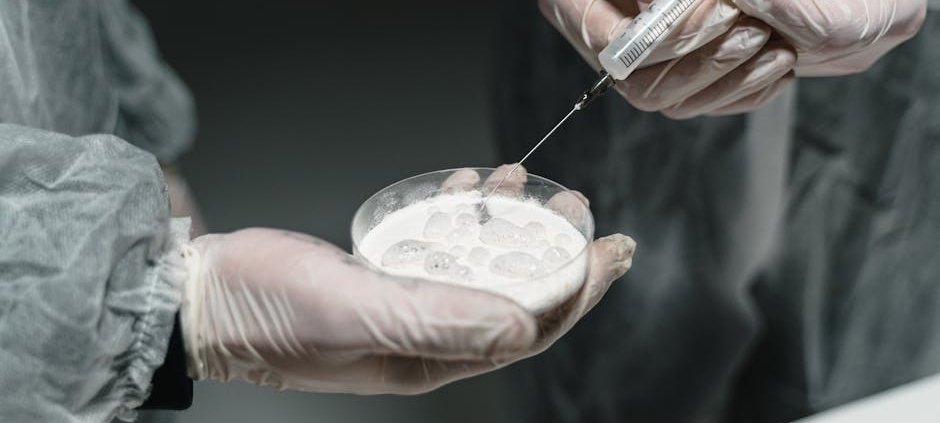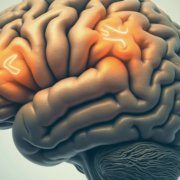Ketamine therapy research is shining new hope for those battling treatment-resistant depression, a condition that remains a challenge for millions around the globe. Unlike traditional antidepressants, which can take weeks to manifest any benefits, ketamine offers rapid relief, often making a noticeable impact within hours or days. This kind of swift response is crucial for individuals like Michelle, who shared her experience of enduring prolonged periods without joy or hope, only to find a glimmer of light with ketamine treatment.
- Ketamine provides quick relief where other treatments fail.
- 76{400639b8b2235b42fe747921d4d2e45f5557a56b5c8add1c19c7c3bc821d5796} of patients show improvement within 24 hours.
- Ideal for those with stubborn depression resistant to standard treatment.
As an expert in the field, I specialize in unpacking complex topics like ketamine therapy research. From extensive experience and deep understanding, my aim is to illuminate this fascinating and vital field of study. Let’s dive deeper into the journey of ketamine therapy and explore the evolving landscape of depression treatment.

The Evolution of Ketamine Therapy
Ketamine’s journey from an anesthetic to a groundbreaking treatment for depression is a tale of innovation and persistence. Originally developed in the 1960s as an anesthetic, ketamine quickly became a staple in both human and veterinary medicine due to its ability to induce anesthesia without depressing the respiratory system. However, its potential as a treatment for depression lay unfinded until decades later.
Anesthetic Origins
Ketamine was first synthesized in 1962 as a safer alternative to phencyclidine (PCP), another anesthetic with severe side effects. Its unique properties made it a popular choice for surgeries and emergency care. Yet, the story of ketamine’s antidepressant effects begins with its interaction with the brain’s NMDA receptor, a crucial gateway in the brain’s signaling system.
NMDA Receptor Findy
In the 1990s, researchers at the National Institute of Diabetes and Digestive and Kidney Diseases, led by Dr. Phil Skolnick, uncovered a significant clue about ketamine’s potential. They found that ketamine acted as an antagonist to the NMDA receptor, which plays a vital role in the brain’s glutamate system. This findy hinted at ketamine’s ability to affect mood and cognition, a theory that would later be explored in depth by scientists at Yale University.
Antidepressant Findings
Fast forward to the year 2000, when a team at Yale, including Dr. John Krystal and Dr. Dennis Charney, conducted the first clinical trial of ketamine for depression. Their work demonstrated that a single intravenous dose of ketamine could produce rapid antidepressant effects, a finding that was both surprising and promising. This was a stark contrast to traditional antidepressants, which often take weeks to show results.
The real breakthrough came in 2006 when the NIMH team, led by Dr. Carlos Zarate, replicated and expanded on the Yale findings. Their research showed that 71{400639b8b2235b42fe747921d4d2e45f5557a56b5c8add1c19c7c3bc821d5796} of participants with treatment-resistant depression experienced significant improvement after receiving ketamine. This was a pivotal moment in ketamine therapy research, sparking a wave of studies exploring its potential for various mood disorders.

While ketamine therapy holds promise, it also presents challenges. Its administration requires careful monitoring due to potential side effects, and its long-term impact is still under investigation. Nevertheless, the rapid relief it offers continues to drive interest and research, paving the way for new treatments in mental health care.
In the next section, we’ll dig into how ketamine’s delivery methods, such as intravenous infusions and nasal sprays, compare in terms of efficacy and convenience.
Ketamine Therapy Research: Breakthroughs and Challenges
Ketamine therapy has emerged as a guide of hope for individuals with treatment-resistant depression. Unlike traditional antidepressants, ketamine offers a rapid onset of relief, often within hours, rather than weeks. This swift action is a game-changer for patients like Michelle, who have endured long cycles of ineffective treatments and persistent despair.
Rapid Onset
The ability of ketamine to quickly alleviate depressive symptoms is linked to its unique action on the brain. It affects the NMDA receptor, part of the glutamate system, which is crucial for synaptic plasticity—the brain’s ability to adapt and change. Studies have shown that ketamine’s influence on these receptors leads to improved neuroplasticity, enhancing the brain’s capacity to form new connections. This might explain the immediate mood improvements observed after ketamine administration.
Neuroplasticity
Research indicates that ketamine not only provides immediate relief but also promotes lasting changes in brain function. A study by Abdallah et al. demonstrated improved global functional connectivity in the brain just 24 hours after ketamine infusion. This suggests that ketamine might create an environment in the brain conducive to healing and growth, potentially reducing the risk of relapse—a common issue in treatment-resistant depression.
Treatment-Resistant Depression
For those like Michelle, who suffer from treatment-resistant depression, ketamine therapy represents a vital lifeline. Traditional antidepressants often fail to provide relief for these individuals, leaving them in a cycle of hopelessness. Ketamine’s effectiveness in breaking this cycle has been documented in numerous studies, with significant improvement reported in a majority of participants.
However, ketamine therapy is not without its challenges. The treatment requires careful administration and monitoring due to potential side effects, including dissociative symptoms. Moreover, the long-term effects of repeated ketamine use are still under research, necessitating ongoing studies to fully understand its impact.
Despite these challenges, the advancements in ketamine therapy research continue to inspire hope. The rapid relief and potential for long-term improvement make ketamine a promising option for those who have exhausted other treatments. As research progresses, ketamine therapy may become a cornerstone in the treatment of depression and other mood disorders.
In the next section, we’ll explore how different delivery methods, such as intravenous infusions and nasal sprays, stack up in terms of effectiveness and convenience.
Comparing Delivery Methods: IV vs. Nasal Spray
When it comes to ketamine therapy, two main delivery methods stand out: intravenous (IV) ketamine and the nasal spray known as esketamine or Spravato. Each method has its own set of benefits and challenges, making the choice between them important for patients and healthcare providers.
Intravenous Ketamine
Intravenous ketamine involves delivering the drug directly into the bloodstream through an IV drip. This method is known for its rapid and powerful effects. Studies, like the Bio-K study, have shown that IV ketamine can lead to significant improvements in mood within hours, especially in patients with severe depression or bipolar disorder. In fact, after just three infusions over 11 days, more than half of the participants in the study experienced remission from their depressive symptoms.
However, IV ketamine requires a clinical setting and careful monitoring by medical professionals. This is due to potential side effects, such as dissociative symptoms, which can include feeling detached from reality. The need for a controlled environment can make this method less convenient for some patients, but it ensures safety during treatment.
Esketamine Nasal Spray (Spravato)
On the other hand, esketamine, marketed as Spravato, offers a different approach. This nasal spray is a newer form of ketamine therapy that has gained attention for its ease of use and potential to provide relief without the need for an IV. Esketamine is derived from the S-ketamine compound, which allows it to be administered as a nasal spray.
Spravato has been approved by the FDA for treatment-resistant depression and is used in conjunction with oral antidepressants. Patients can receive the nasal spray in a healthcare setting, where they are monitored for a short period after administration. This method is less invasive than IV infusions and can be more convenient for patients who prefer not to have an IV line.
Effectiveness and Convenience
Both IV ketamine and Spravato have shown promising results in treating depression, but they cater to different needs. IV ketamine might be more suitable for those requiring rapid and intense intervention, while Spravato offers a more user-friendly option for ongoing treatment.
The choice between IV and nasal spray ketamine depends on several factors, including the patient’s medical history, preference, and the specific recommendations of their healthcare provider. As research continues, we may see further advancements in both delivery methods, potentially offering even more custom solutions for individuals battling depression.
In the next section, we’ll dig into the psychological aspects of ketamine therapy, exploring how expectations and the placebo effect can influence treatment outcomes.
The Role of Expectation and Placebo in Ketamine Therapy
When it comes to ketamine therapy, the mind plays a crucial role in how effective the treatment can be. Let’s explore how expectation and the placebo effect can shape the outcomes of ketamine therapy.
The Power of Expectation
Expectations can have a big impact on how patients respond to treatments like ketamine. In a fascinating study conducted by Stanford Medicine researchers, it was finded that even when patients thought they received ketamine, their depression improved significantly—even if they were actually given a placebo. This suggests that the mere belief in receiving ketamine can trigger positive changes in mood.
Dr. Boris Heifets, one of the study’s authors, pointed out that many patients reported life-changing improvements, even when they were in the placebo group. This highlights how powerful positive expectations can be. When patients believe a treatment will work, their brain may respond accordingly, potentially enhancing the actual effects of the drug.
Understanding the Placebo Effect
The placebo effect isn’t just about taking a sugar pill and feeling better. It’s a complex psychological phenomenon where a patient’s belief in a treatment can lead to real, measurable improvements. In the context of ketamine therapy, this effect might be partly due to the brain’s μ-opioid receptors, which are involved in processing pain and emotions. These receptors might be activated by both the placebo effect and ketamine itself, creating a physiological response that helps alleviate depression.
Dr. Heifets emphasized that saying ketamine is “just a placebo” does a disservice to the intricate mechanisms at play. The placebo effect, in essence, is a testament to the brain’s ability to heal itself when given hope and positive expectations.
Psychological Factors in Treatment
The psychological factors involved in ketamine therapy go beyond just expectation and placebo. The experience of receiving treatment, the support from healthcare providers, and the surrounding environment can all contribute to how well a patient responds. Creating a positive and supportive atmosphere might improve the benefits of ketamine therapy.
Moreover, while the psychedelic experience of ketamine is often considered part of its therapeutic effect, recent insights suggest that it might not be essential. As Dr. Heifets noted, it could be possible to achieve the same benefits with a non-hallucinogenic analog of ketamine, potentially making treatment more accessible and less daunting for some patients.
In the next section, we’ll address some common questions about ketamine therapy research, shedding light on how this treatment works and what patients can expect.
Frequently Asked Questions about Ketamine Therapy Research
How does ketamine work for depression?
Ketamine therapy is notable for its rapid relief of depressive symptoms, especially in treatment-resistant cases. Unlike traditional antidepressants that primarily target serotonin, ketamine operates through the glutamate system. It blocks the NMDA receptors in the brain, leading to increased glutamate activity. This, in turn, promotes the growth of new neural connections, a process known as neuroplasticity. By enhancing these pathways, ketamine can improve mood and cognitive function much quicker than conventional treatments.
How many ketamine treatments are needed for depression?
The number of ketamine treatments required can vary based on individual needs and responses. Typically, patients receive repeated doses over a few weeks. For instance, a common regimen might involve two sessions per week for a few weeks. Studies, such as one conducted by Massachusetts General Brigham, have shown that 55{400639b8b2235b42fe747921d4d2e45f5557a56b5c8add1c19c7c3bc821d5796} of patients experienced sustained improvements after a series of treatments. However, the exact treatment duration and frequency should be personalized and closely monitored by healthcare providers to ensure maximum efficacy and safety.
What are the side effects of ketamine therapy?
While ketamine offers promising results, it’s not without potential side effects. Short-term effects can include dissociative symptoms, such as feeling detached from reality or experiencing mild hallucinations. These are typically transient and resolve shortly after the treatment session ends.
Safety concerns also extend to possible long-term effects. Although rare, prolonged use of ketamine may lead to issues such as bladder damage and cognitive impairments. It’s crucial for patients to discuss these risks with their healthcare provider and weigh them against the potential benefits. Importantly, the therapy is administered under professional supervision to minimize risks and ensure safe usage.
In the next section, we’ll dig into the various delivery methods of ketamine therapy, comparing intravenous administration to nasal spray options like Spravato.
Conclusion
As we’ve explored, ketamine therapy research is paving new paths in treating depression, especially for those who haven’t found relief with traditional methods. It’s a guide of hope for many patients, offering rapid relief and a fresh approach to mental health care.
At Buy Ketamine Crystals Online, we provide access to high-quality ketamine products without the need for a prescription. Our offerings include crystals, powder, pills, and vials, all delivered discreetly to your doorstep. We operate in various countries, ensuring that our products are accessible to those in need across the globe.
Future research is crucial to open uping ketamine’s full potential and ensuring its safe and effective use. Studies like the Bio-K study show promising results, with 67{400639b8b2235b42fe747921d4d2e45f5557a56b5c8add1c19c7c3bc821d5796} of participants achieving a significant response, and 52{400639b8b2235b42fe747921d4d2e45f5557a56b5c8add1c19c7c3bc821d5796} reaching remission after treatment. These findings highlight ketamine’s potential as a game-changer in mental health treatment.
Patients are at the heart of this research. The hope that ketamine therapy brings is invaluable. For many, it represents a new beginning—a chance to reclaim their lives from the grips of depression. As research continues, we look forward to more breakthroughs that will improve understanding and improve outcomes for individuals worldwide.
In summary, ketamine therapy is not just a treatment; it’s a revolution in mental health care. We are proud to be part of this journey, offering products that can make a difference. Visit our service page to explore our offerings and learn more about how ketamine can be a part of your path to wellness.











